The Origins of Our Gay Scene
In the early 1970s a few local pubs and clubs started to promote themselves as being LGBT friendly. Some of these venues had been covertly used by LGBT+ and gender non conforming individuals for many years but were only able to openly advertise themselves following the partial decriminalisation of sex between men in 1967.
The earliest reference to gay friendly venues comes from oral history passed down within our community. It is said that as early as the 1920s The Unicorn Inn was used a meeting place for men and that during the second world war The Antelope and The Stage Door were well known as gay friendly pubs.
The map below shows some of our early venues. You can switch between old and modern map views by using the left and right arrows. Each of the venues is discussed in more detail on the page below.
The Theatre Community
Our early LBGT venues emerged in an area around old theatres and it is likely that the culture of communities linked to the theatre was an important part of the origins of our gay scene.
Unconventional characters such as male and female impersonators were common in the old days of the music hall and flamboyant dress and mannerisms were more likely to be tolerated within the artistic and theatrical milieu. Men and women might risk being openly gay within the theatre community or at least feel less likely to suffer serious retribution if their homosexuality were discovered.
Local Inns and Hotels provided lodgings for touring performers and the rented homes and boarding houses in surrounding streets will have accommodated those with regular jobs in local theatres.
Mixing within this crowd were ordinary working class folk whose dress and manner conveyed no obvious indication of same sex attraction or gender nonconformity but who came to know this area as a place they might meet others like themselves.
The Theatre Royal
In 1840 a disused Methodist Chapel was leased to a group of eighty working men and reconstructed as the “People’s Hall”. It was a focus for the local chartist movement and intended to be a place of learning, however it also reportedly attracted drunken and disorderly men and local prostitutes. In 1852 the hall was taken over, substantially improved and reopened as “The Royal Pottery Theatre”.
The Theatre fronted onto Brunswick street facing up Frederic Street – which by 1857 contained the first Mechanics’ Institute, a place where working class people could learn science and the arts. The Mechanics Institute later occupied a grander building in Pall Mall (now gone) and was one of the venues visited by Oscar Wilde during his lecture tour.
In 1870 the theatre was demolished and rebuilt as the “Theatre Royal and Opera House”. In the following years it was further extended and the entrance moved to Pall Mall. By 1887 the Theatre had capacity to seat 2600 patrons and enjoyed popularity for over sixty years.
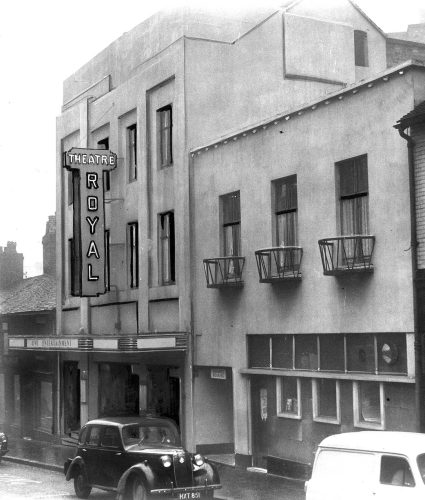
The Theatre Royal Entrance on Pall Mall around 1930
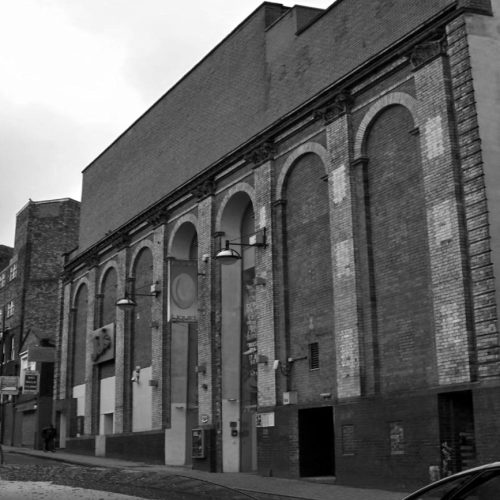
The façade of the old entrance in Brunswick street, here photographed in modern times
In 1949 the theatre was destroyed by fire and following a substantial rebuild reopened in 1951. Theatre audiences started to decline following the advent of television. Mecca converted the theatre to bingo in 1961 though occasional amateur dramatics performances continued until in 1966 a casino was opened on the stage and performances ended.

In 1981 Mecca closed the bingo operation, and a local trust purchased the theatre. The theatre became moderately successful in the 1980s, producing a number of shows including Cabaret and the legendary UK revival tour of The Rocky Horror Show.
Mike Lloyd purchased the Theatre Royal in 1996 and commenced a full refurbishment renaming the building ‘The Royal’. This relaunch ultimately failed, with the building being sold off and gutted in 2000 and being converted to two nightclubs.
The Regent
The Regent Theatre was constructed in 1929 as a cinema with a stage that allowed “cine-variety” with the stage being used in its early years to host stage performances in-between films.
In 1950, The Regent was renamed The Gaumont and began to host local amateur dramatic performances following the closure of the nearby Theatre Royal. It also continued to be used as a cinema up until 1989.
Following renovation and redvelopment in the 1990s it reopened as the Regent Theatre.
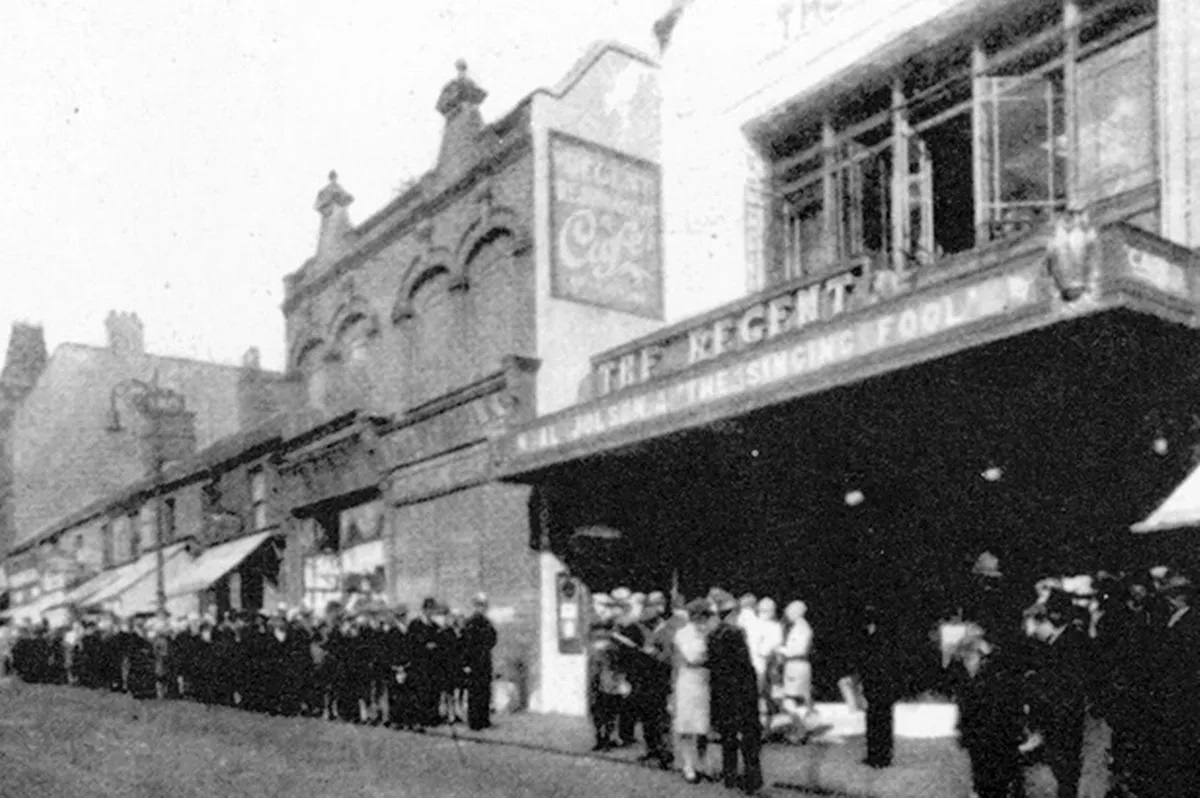
The Regent around the time it opened
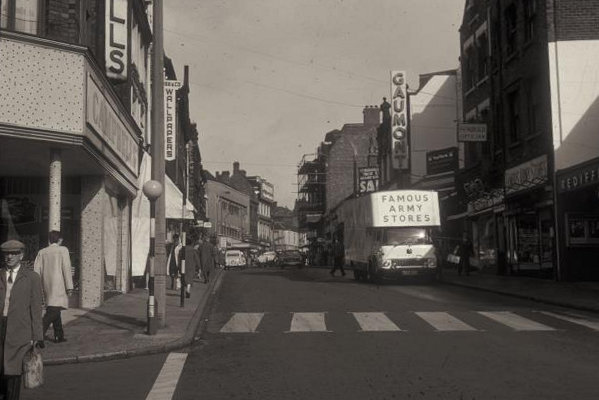
The Regent in 1963 when it was the Gaumont Cinema
The Unicorn Inn
This historic pub existed before he Theatre Royal first opened its doors and has been serving local theatre patrons for nearly two hundred years. It is situated in close proximity to both the Theatre Royal and the Regent. In our community’s orally transmitted history it has been noted as a place where like minded men could meet even as far back as the 1920s. However, given its long association with the theatre community it may well have been used as a meeting place when the Theatre Royal first opened in the 1800s.
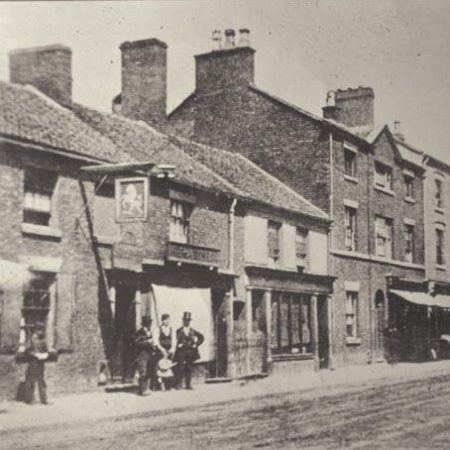
The Unicorn Inn around 1860
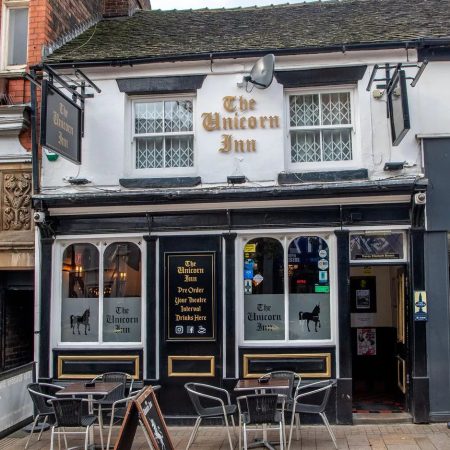
The Unicorn Inn photographed in 2022
The Stage Door
The Stage Door stood on the corner of Gitana Street and Brunswick Street and took it’s name from the old entrance of the Theatre Royal which originally stood opposite.
There was a beer house here at least a hundred years ago called the Mechanics Inn named after the Mechanics’ Institute which originally stood nearby. The Mechanics Institute was a place where working class people could learn science and the arts. A later version occupied a grander building in Pall Mall (now gone) and was one of the venues visited by Oscar Wilde during his lecture tour which you can read about here.
In the early 1900s the Mechanics Inn was renamed “Gertie Gitanas” in honour of a nationally renowned music hall singer regarded by by some as the “Vera Lynn” of World War One. Gertie Gitana was born locally in Longport and her family moved to Frederick Street around 1891 when she was four years old. Frederick Street was later renamed as Gitana Street.
The pub was rebuilt in the 1970s after which it was named “The Stage Door”.
Local recollections say that this venue was a meeting place for men during the second world war along with the nearby Antelope Hotel. Given the long association with the theatre it may have been a meeting place in earlier times as well.
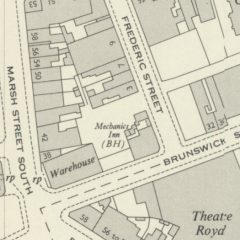
A map from the mid 20th Century shows the Mechanics Inn
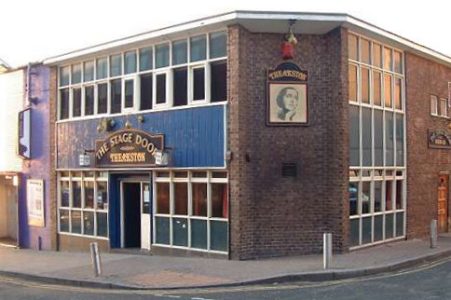
The Stage Door in modern times
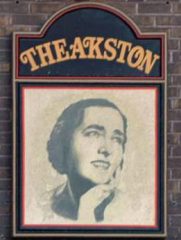
A sign on the modern building commemorated Gertie Gitana
The Grand Hotel
The Grand Hotel was built in the second half of the nineteenth century adjacent to the Hanley railway station which is now long gone.
It had a reputation as a potential meeting place for the gay community as long ago as the second world war. It was one of the venues that appeared in the first listings that appeared for Stoke-on-Trent in Gay News in the early 1970s
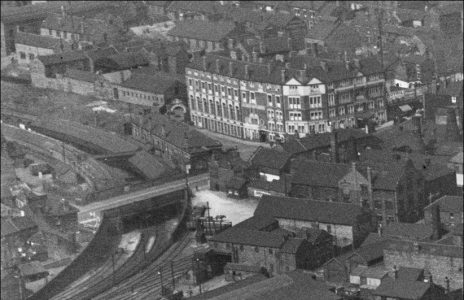
The Grand Hotel was built next to Hanley railway station on the old Potteries loop line
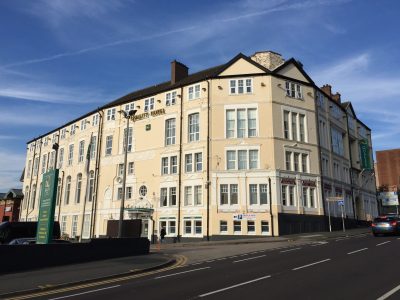
In modern times it became the “Quality Hotel”
The Antelope Hotel
Situated at the corner of Marsh Street and Trinity Street, the Antelope was reputedly a meeting place for gay men as early as the second world war. It appeared in the first “Gay News” listings for Stoke-on-Trent in the early 1970s and was well known locally as a pub used by gay men and women over many decades. In modern times The Antelope ceased to be a gay venue and under new ownership was renamed initially as Brannigans and latterly as The Down Under. The building has recently been demolished.
Early photographs of Trinity Street show The Antelope’s proximity to the Grand Theatre suggesting it may have had much earlier associations as a gay friendly venue linked to the theatre communities. “The Grand Theatre of Varieties” had a corner entrance at Trinity Street and Foundry Street. It opened in 1898 and was used as a theatre for variety and circus performances. It was destroyed by a fire in 1932 and was later replaced by an Odeon cinema.
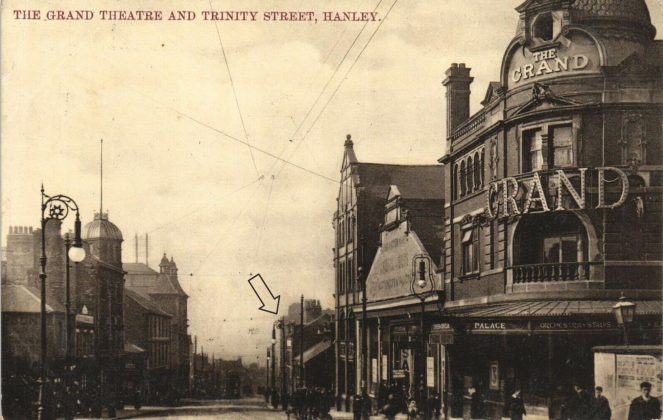
This postcard from 1906 shows the old Grand Theatre in Trinity Street. An arrow has been added to point to the Antelope Hotel
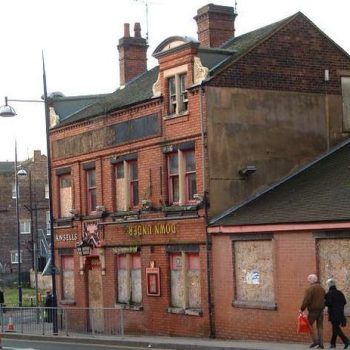
The Antelope, latterly named as the Down Under, and now demolished.

Notice of alterations in The Evening Sentinel 1935
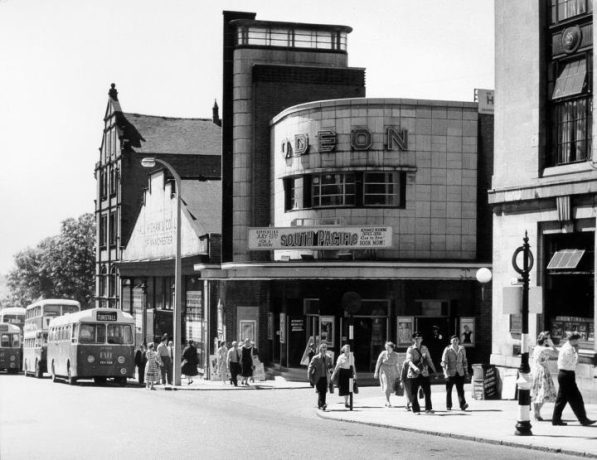
Trinity Street in 1959, the Grand Theatre has been replaced by an Odeon Cinema. The Antelope Hotel is out of view further down the street
The Star Inn
The Star is another old venue in this area that has had long associations with the gay community. It is remembered from the 1970s as a friendly pub situated opposite the 141 which was Stoke’s first gay club. It has also been mentioned as a meeting place long before this with recollections of it being particularly popular with soldiers and navy personnel in the 1950s and probably even earlier than that.
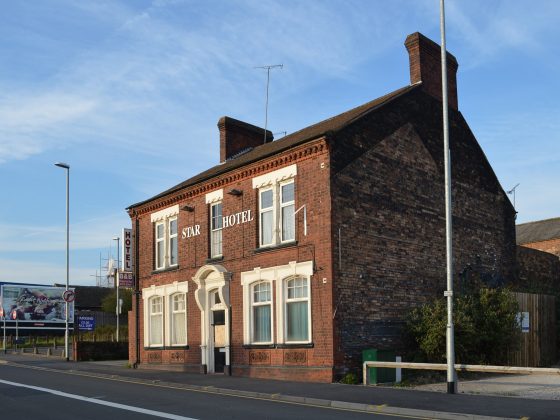
The Star in 2015 (photo credit Jonathan Hutchins)
The One for One Club
Stoke’s first gay night club opened in May 1973. It was called the One for One, reflecting its address in 141 Marsh Street, Hanley. The name One for One also had other connotations.
Old maps and archives show that 141 Marsh Street was originally “The Lamb Inn”.
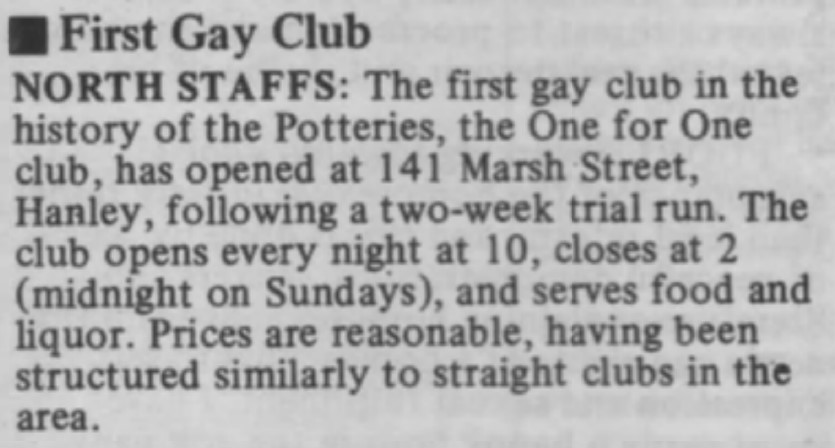
The opening of the One for One was announced in “Gay News” May 1973
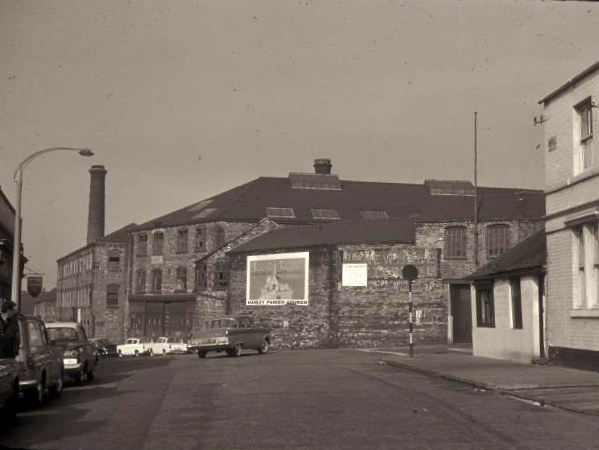
A photograph of Marsh Street South in 1962. The Lamb Inn (later the site of the One for One Club) is around the bend in the distant left, just beyond the sign for the Black Horse pub.
More LGBT+ History Pages




